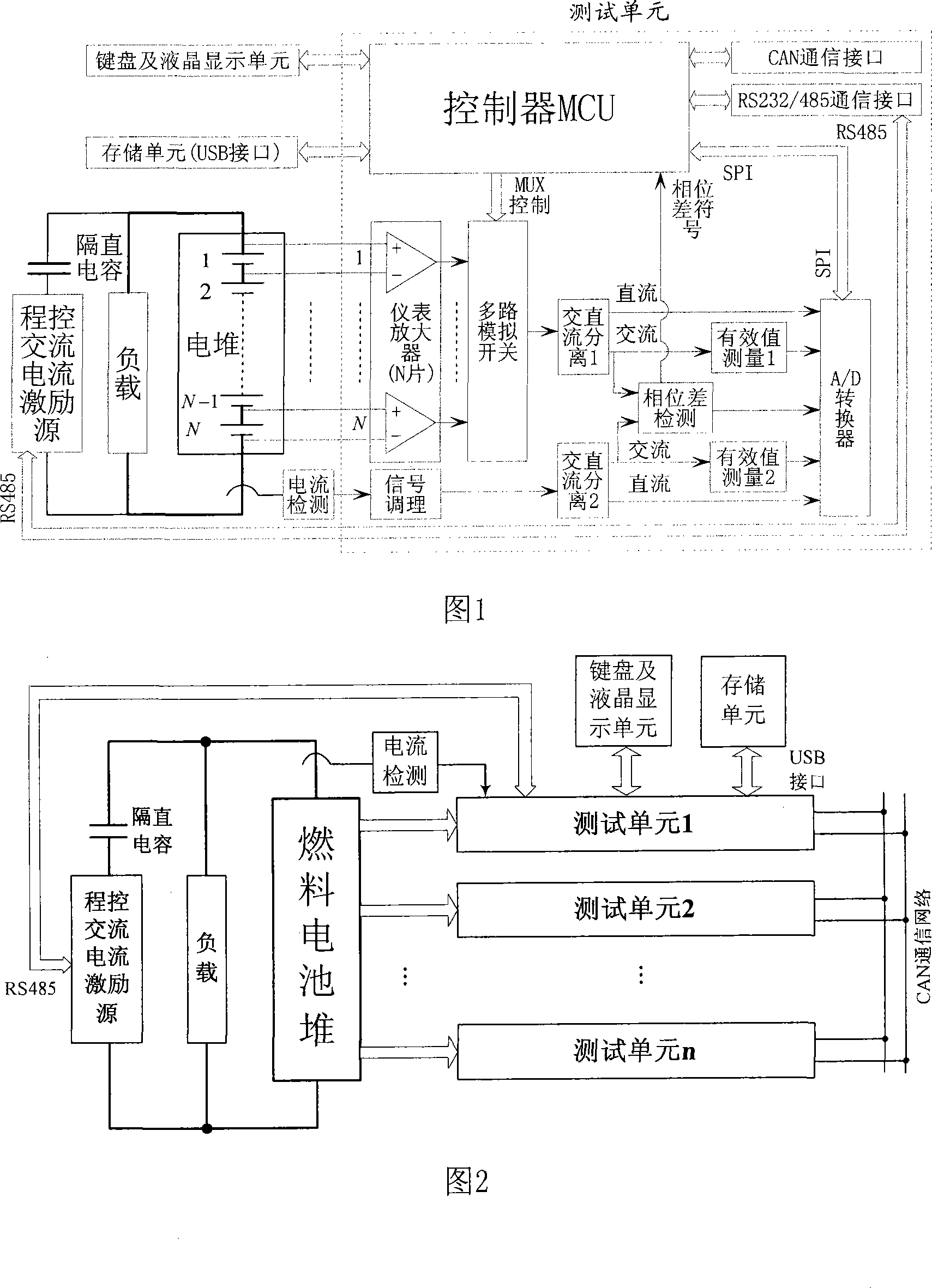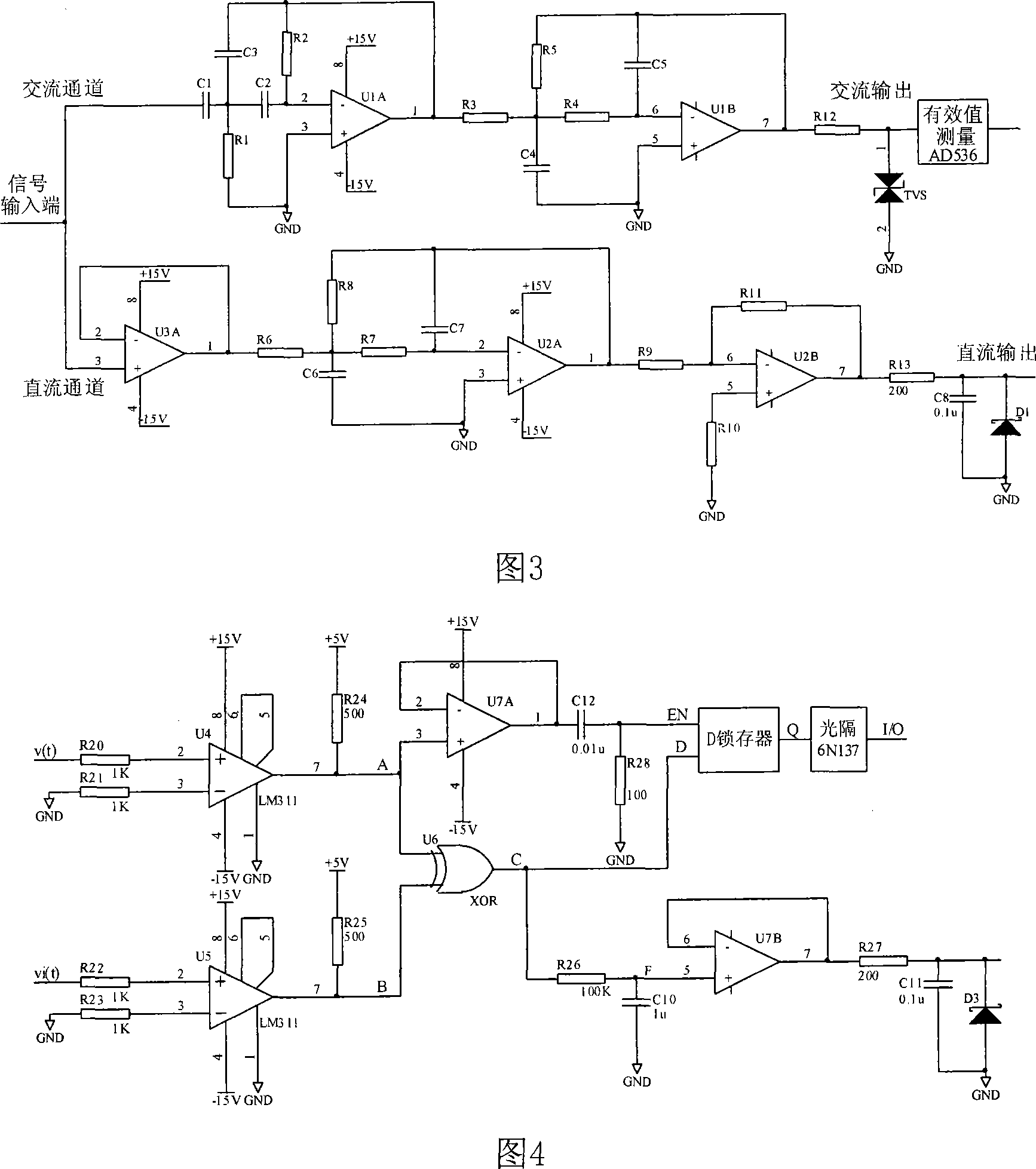Single slice battery essential resistance and voltage on-line testing system for fuel cell pile
A fuel cell stack and monolithic battery technology, applied in the direction of measuring resistance/reactance/impedance, signal transmission system, measuring electricity, etc., can solve problems such as limited functions and inability to perform online testing, and achieve high reliability and strong practicability , fast effect
- Summary
- Abstract
- Description
- Claims
- Application Information
AI Technical Summary
Problems solved by technology
Method used
Image
Examples
Embodiment Construction
[0021] The present invention will be further described in detail below in conjunction with the accompanying drawings and embodiments, but these embodiments should not be construed as limiting the present invention.
[0022] The invention includes a test unit, a program-controlled AC current excitation source and a DC blocking capacitor, a current detection module, a keyboard, a liquid crystal display unit, and a storage unit, wherein the test unit is composed of a controller MCU, an instrument amplifier, a multi-channel analog switch, a signal conditioning circuit, an AC Composed of DC separation circuit, phase difference detection circuit, effective value measurement circuit, A / D converter, RS232 / 485 communication interface and CAN (Control Local Area Network) communication interface (Figure 1), in which the program-controlled AC current excitation source is connected in series with a DC blocking capacitor Then it is connected in parallel with the fuel cell stack, so that a si...
PUM
 Login to View More
Login to View More Abstract
Description
Claims
Application Information
 Login to View More
Login to View More - R&D
- Intellectual Property
- Life Sciences
- Materials
- Tech Scout
- Unparalleled Data Quality
- Higher Quality Content
- 60% Fewer Hallucinations
Browse by: Latest US Patents, China's latest patents, Technical Efficacy Thesaurus, Application Domain, Technology Topic, Popular Technical Reports.
© 2025 PatSnap. All rights reserved.Legal|Privacy policy|Modern Slavery Act Transparency Statement|Sitemap|About US| Contact US: help@patsnap.com



